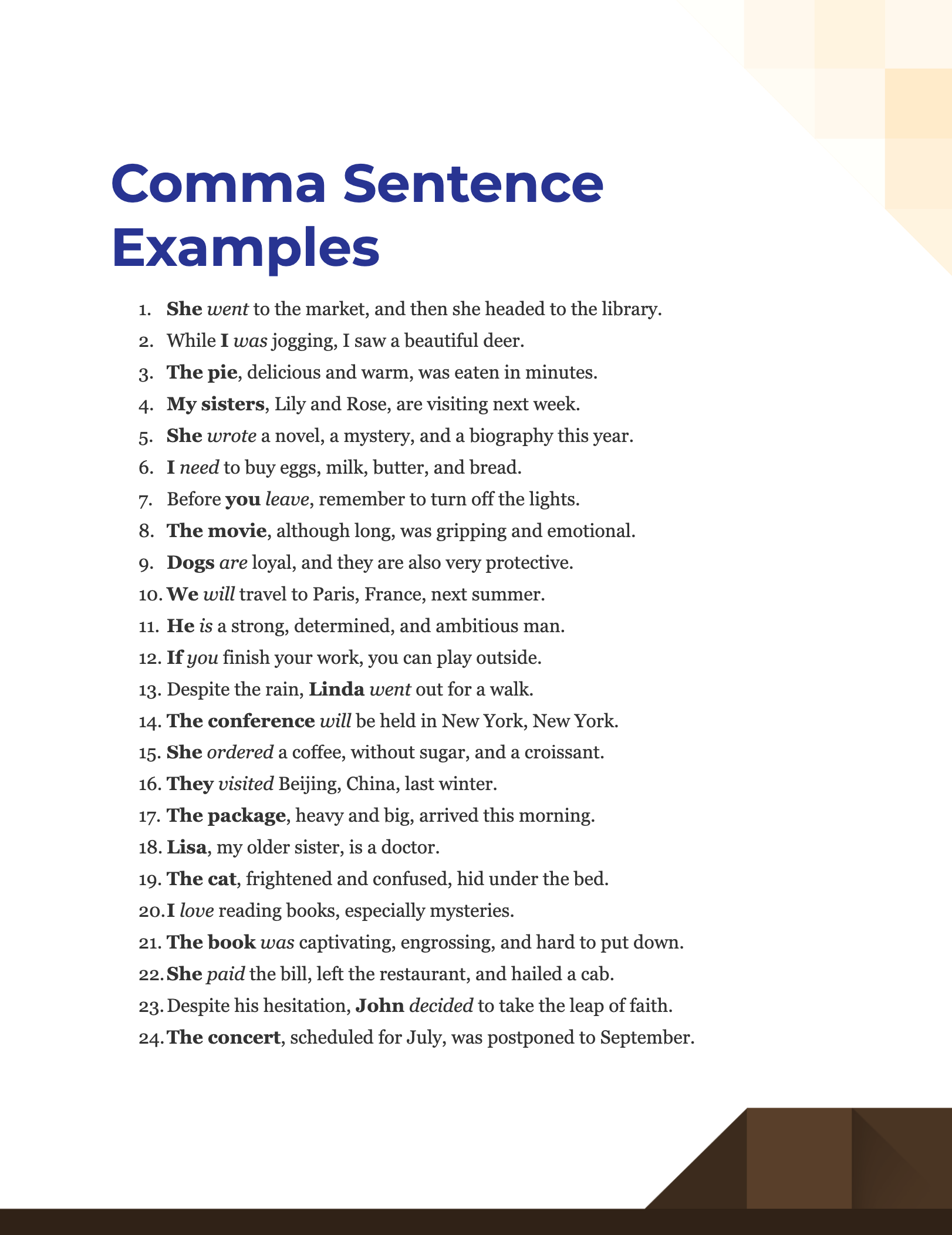Commas are a vital punctuation mark in the English language that help to clarify meaning, separate elements in a sentence, and improve readability. Understanding the rules for comma usage can greatly enhance your writing skills and prevent confusion for your readers.
Whether you’re writing an essay, a business email, or a social media post, knowing when to use commas correctly is essential. Let’s explore some common comma rules and examples to help you master this punctuation mark.
Comma Rules and Examples
1. Use a comma to separate items in a list. For example: “I need to buy apples, bananas, and oranges at the grocery store.” In this sentence, the commas separate the items in the list.
2. Use a comma before a conjunction (and, but, or, nor, for, so, yet) when joining two independent clauses. For example: “She wanted to go to the movies, but he preferred to stay home.” In this sentence, the comma separates the two independent clauses.
3. Use a comma after an introductory phrase or clause. For example: “After the meeting, we went out for lunch.” In this sentence, the comma follows the introductory phrase “After the meeting.”
4. Use a comma to set off non-essential information. For example: “My sister, who lives in New York, is coming to visit me next week.” In this sentence, the information “who lives in New York” is non-essential and is set off by commas.
5. Use a comma to separate adjectives when they equally describe a noun. For example: “He is a tall, handsome man.” In this sentence, the commas separate the adjectives “tall” and “handsome.”
Mastering comma rules can significantly improve the clarity and flow of your writing. Remember to always proofread your work to ensure proper comma usage and enhance the overall quality of your writing.
